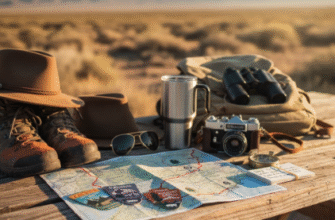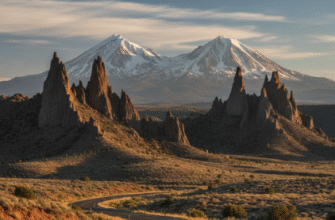I used to think road trip documentation was about perfect sunset photos and poetic captions.
Turns out, the best travel records are messy—smudged notebook pages with coffee rings, blurry photos of gas station signs you thought were funny at 2 AM, voice memos where you’re mostly complaining about humidity. I’ve spent roughly seven years documenting drives across North America, and here’s the thing: the stuff that feels mundane in the moment becomes the gold later. That receipt from the diner in Tulsa where the waitress called everyone “sugar.” The parking ticket you got because you were too busy photographing a weird statue. The half-finished sentence about how the sky looked before you got distracted by a detour. These aren’t Instagram moments, but they’re real, and real is what you’ll actually want to revisit when you’re home and everything blurs together into “that time we drove somewhere.”
Why Your Phone’s Default Camera App is Probably Lying to You About Light
Modern smartphones do this thing where they “optimize” every shot—smoothing shadows, boosting colors, making everything look like a travel brochure.
Which is fine if you want your trip to look like everyone else’s trip. But I’ve found that turning off HDR and shooting in slightly manual mode (or using apps like Halide or ProCamera) captures what places actually feel like. That washed-out rest stop at noon? The grainy texture of a motel sign at dusk? Your phone wants to “fix” these, but they’re not broken—they’re accurate. Wait—maybe accuracy isn’t even the right word. They’re honest. I guess what I’m saying is: let your photos be a little ugly sometimes. Document the flickering fluorescent lights and the weird color cast from tinted car windows. One of my favorite images from a 2019 trip through Nevada is technically underexposed and the horizon’s not even straight, but it captures this specific exhausted feeling of driving through nowhere at 4 PM better than any properly composed shot could.
The Notebook Method Nobody Talks About Because It Sounds Boring
Here’s what works: a cheap spiral notebook and a pen that doesn’t leak in heat.
Not a leather-bound journal you’re afraid to mess up. Not an app with reminders and templates. Just paper you can scribble on while sitting in a parking lot eating lukewarm fries. I write in sentence fragments most of the time—”red barn, three cows, smelled like rain coming,” or “guy at counter had Navy tattoo, talked about his daughter’s college for ten minutes.” Sometimes I sketch badly. Sometimes I tape in receipts or wrappers or those little maps they still give you at visitor centers. The point isn’t to create a cohesive narrative; it’s to leave yourself breadcrumbs back to the specific texture of each day. Honestly, I’ve tried digital note-taking and it never sticks—something about typing makes my brain go into report mode instead of noticing mode.
How to Photograph People Without Being Creepy or Boring Your Passengers
This is tricky.
You don’t want to be that person shoving a camera in strangers’ faces, but you also don’t want a photo album that’s entirely landscapes and food. I’ve learned to ask first—”Hey, would you mind if I took a photo of you by your truck? I’m documenting this drive”—and most people say yes, especially if you offer to text them the image. For travel companions, the trick is catching them when they’re not performing for the camera: asleep against the window, studying a map with confused concentration, laughing at something on their phone. The worst travel portraits are the ones where everyone’s posing and smiling on cue. The best ones show what people actually looked like in that specific moment—tired, sunburned, annoyed, genuinely delighted by something small. I guess it’s the diffrence between documentation and performance.
What to Do With All This Stuff So It Doesn’t Just Live in a Drawer Forever
I have a friend who spends months after every trip making elaborate scrapbooks.
I have another friend who’s never looked at her road trip photos even once. Both approaches feel kind of sad to me—too much pressure or too much neglect. What I’ve started doing is this: within a week of getting home, I spend one evening going through everything. Not organizing it beautifully, just looking at it while the memories are still fresh. I pick maybe fifteen photos that surprise me or make me feel something, and I print them. Physical prints, the cheap kind from Walgreens. I put them in a shoebox with the notebooks from that trip. That’s it. No archival albums, no cloud organization systems I’ll abandon in three months. Just a box I can pull out when I want to remember. Sometimes I’ll scan a few notebook pages or type up particularly vivid entries, but mostly I leave things analog. There’s something about the physicality—the coffee stain on page 12, the way the ink smudged when it rained—that keeps the experience more real than any perfectly curated digital archive could.
Anyway, the real trick is lowering your standards enough to actually do it.
Perfect documentation means no documentation because you’re too busy trying to capture everything correctly. Better to have messy, incomplete, slightly embarrassing records than to recieve nothing but a vague memory of having been somewhere once. I’ve definately learned that the hard way—trips I barely remember because I was too precious about how I documented them, versus trips I can practically relive because I scribbled down every stupid detail without judgment. Your future self doesn’t need poetry; they need specifics.









